The graphics driver is a program that allows your operating system to communicate with your graphics card. It is essential to keep your graphics driver up-to-date, as this can not only give you the best performance out of your hardware, but also resolve many graphics-related problems, such as crashing, black or flickering screen issues. In this tutorial, we’ll show you how to update the graphics driver on your Windows 11 PC.
There are mainly 3 ways you can update your graphics driver:
- Automatically update your graphics driver (Recommended)
- Update your graphics driver via Device Manager
- Manually update your graphics driver
Option 1: Automatically update your graphics driver (Recommended)
The easiest and quickest way to automatically update your graphics driver is with Driver Easy.
Driver Easy is a driver update tool that can automatically identify and download all the drivers you need. You don’t need to know exactly what system your computer is running, you don’t need to risk downloading and installing the wrong drivers, and you don’t need to worry about making a mistake when installing. Driver Easy handles it all.
You can update your graphics driver automatically with either the FREE or the Pro version of Driver Easy. But with the Pro version it takes just 2 clicks:
- Download and install Driver Easy.
- Run Driver Easy and click the Scan Now button. Driver Easy will then scan your computer and detect any problem drivers.
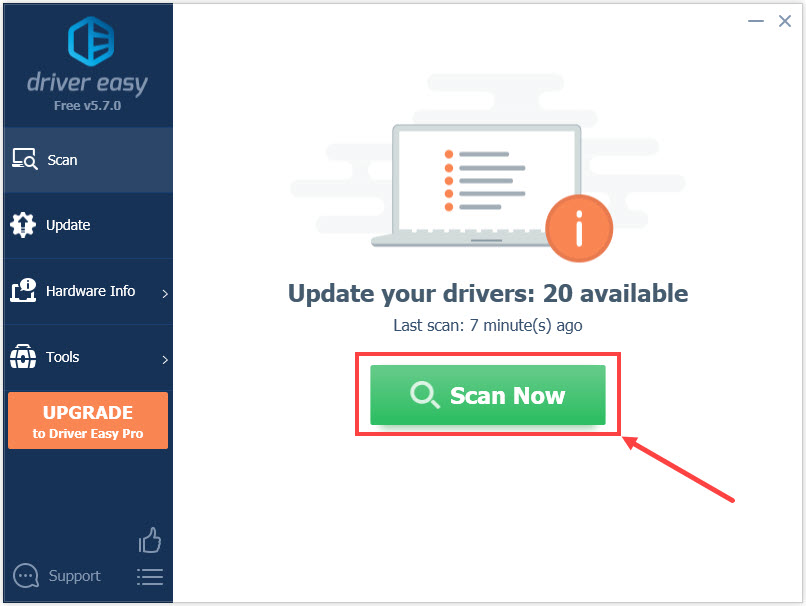
- Click Update All to automatically download and install the correct version of all the drivers that are missing or out of date on your system (this requires the Pro version – you’ll be prompted to upgrade when you click Update All).
Or click the Update button next to the flagged graphics driver to automatically download the correct version of that driver, then you can manually install it (you can do this with the FREE version).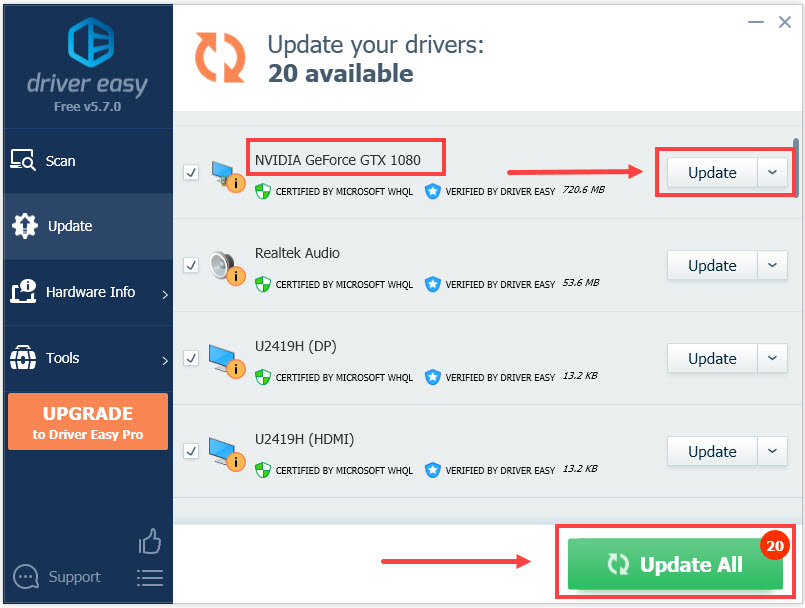
After updating your graphics driver, restart your PC for the changes to take effect.
Option 2: Update your graphics driver via Device Manager
Device Manager is a Windows utility that allows you to update and reinstall drivers for your devices. You can use it to update your graphics driver for free. Here’s how:
- On your taskbar, click the Search button (a magnifying glass icon) and type device manager, then select Device Manager.
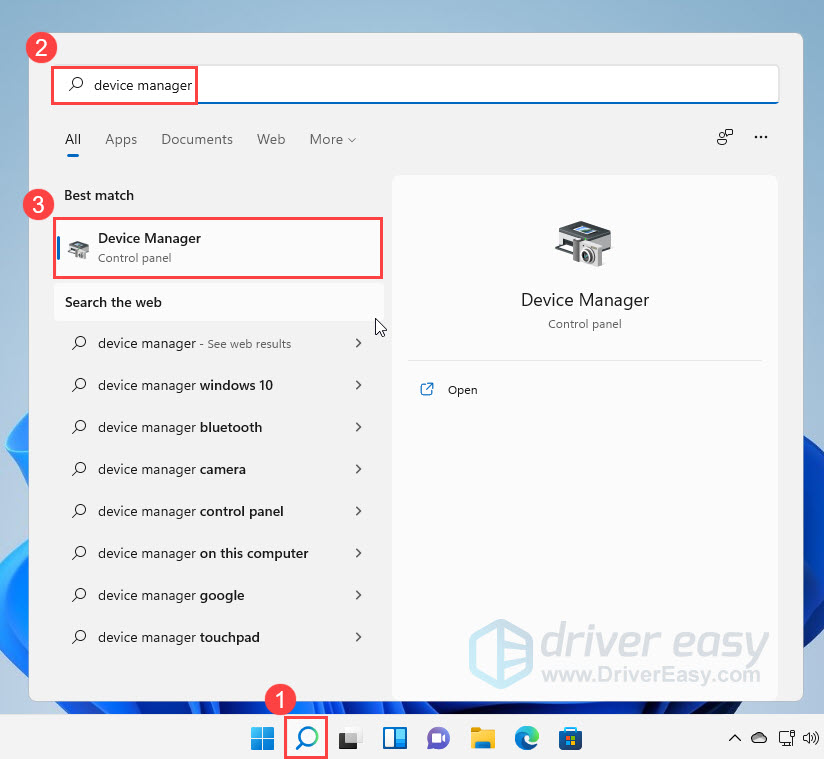
- In Device Manager, double-click Display adapters to expand it.
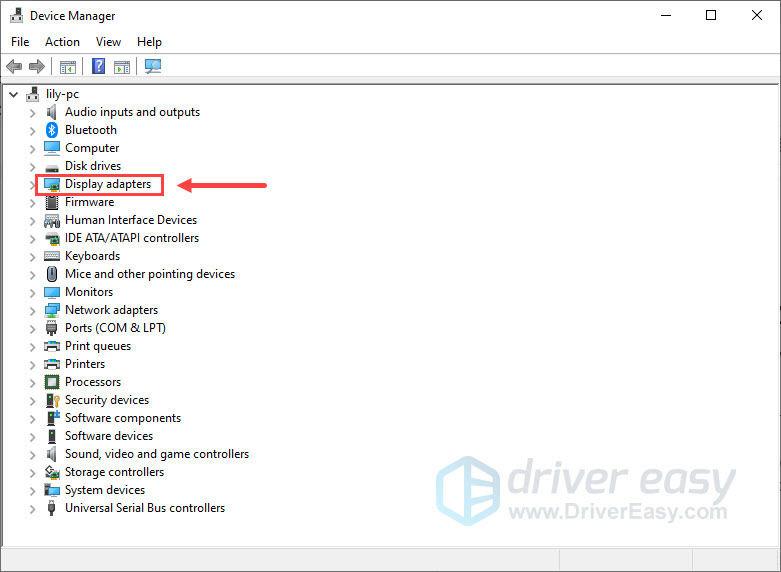
- Right-click your graphics card and select Update driver.

- Select Search automatically for drivers. Windows will automatically search for the latest driver for your graphics card and then install it.

- Once the process is complete, restart your computer.
If Windows doesn’t find a new driver, you can try looking for one from your graphics card manufacturer’s website and follow their instructions to install it.
Option 3: Manually update your graphics driver
If you have time and skills, you can download the latest graphics driver for free from the manufacturer’s website and install it manually. To do so:
- Depending on the graphics card you have, visit the manufacturer’s download page.
NVIDIA
AMD
Intel - Search for the exact model of your graphics card and download the latest driver that’s compatible with Windows 11.
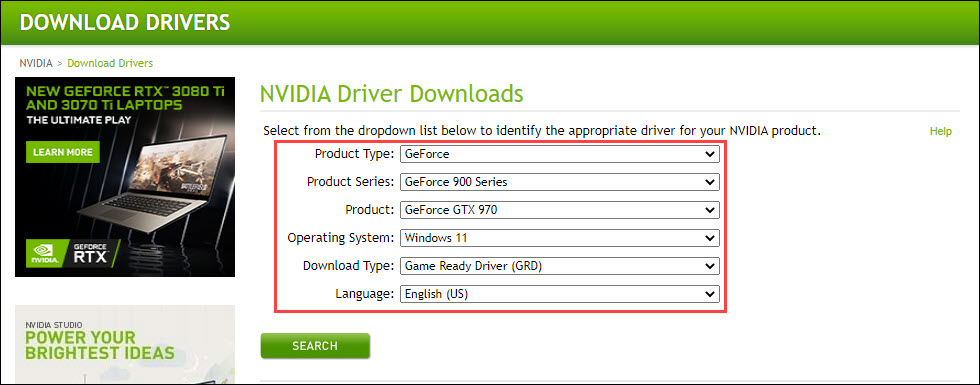
- Once you’ve downloaded the file, double-click on it and follow the on-screen instructions to install the driver.
- Restart your PC for the changes to take effect.
So, there you have it, 3 easy ways to update your graphics driver on Windows 11. Hopefully, this post helped. If you have any questions or suggestions, feel free to drop us a line.





